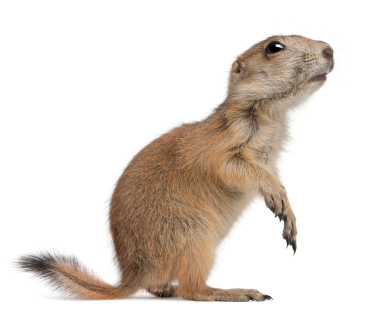
Physical Description & Traits
Despite their canine name, prairie dogs are actually members of the rodent family. Approximately a foot and a half long including their tails, the light brown animals weigh two to four pounds. They have short, muscular legs and long nails on their feet, ideal for the burrowing and hole-digging that takes up much of their time. The name prairie dog is derived from the high-pitched, bark-like squeaks they use to communicate and warn each other of danger. The noise prompted early settlers to call the pests dogs and sod poodles.

Common Habitats
Prairie dogs live together in what is called a town, a series of holes that are interconnected by a complex tunnel system. Burrows are divided up similarly to human homes, with places for young, areas for sleeping, and even designated spots to excrete waste. There are approximately 50 burrow entrances per acre of land, with anywhere from five to 35 prairie dogs living within that acre. Their diet consists of flowering plants and grasses with high moisture content.
Problems Caused by Prairie Dogs
Due to their love of wide-open spaces, prairie dogs often target ranch land. A prairie dog family can quickly defoliate an area, giving it a barren, over-grazed look and eliminating food sources for other species. The holes from their prolific burrowing habits create fall risks for livestock and horses. Riders of horses can become injured if they are astride when the fall occurs, as well. To avoid these issues, trust the experts at Critter Control to safely and professionally identify and remove prairie dogs from properties.